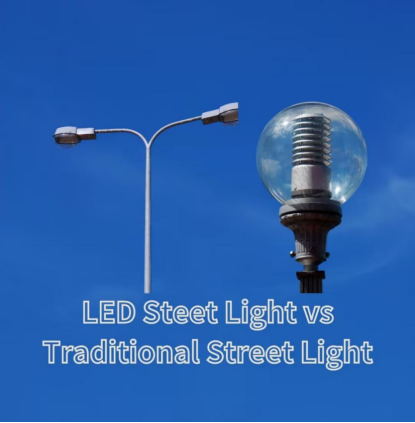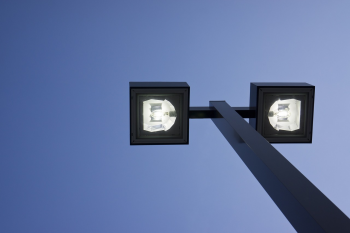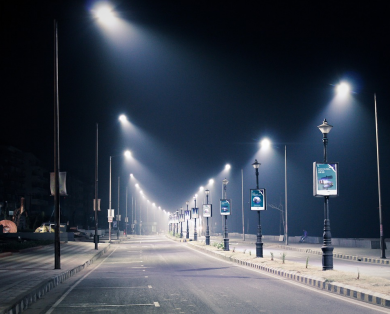Table of Contents
Introduction to LED and Traditional Street Lights
Technical Differences in Operation
Key Differences: Cost, Maintenance, Brightness, and Environmental Impact
Pros and Cons of LED and Traditional Street Lights
Factors to Consider When Choosing Between the Two
Embracing a Sustainable Future with Sansi LED Street Lights

Street lighting is a critical component of urban infrastructure, ensuring safety and visibility during the night. The choice between LED and traditional street lights is not merely a matter of aesthetics but involves a complex evaluation of efficiency, cost, and environmental impact. This blog post delves into the nuances of LED and traditional street lights, highlighting their respective advantages and disadvantages, and providing insights into the decision-making process.
1. Introduction to LED and Traditional Street Lights
LED, or light-emitting diode, street lights have emerged as a leading choice in energy-efficient lighting solutions. Unlike traditional incandescent bulbs, LEDs generate light through the passage of electricity through a semiconductor material. This process not only results in a longer lifespan but also significantly reduces energy consumption. Traditional street lights, on the other hand, rely on incandescent bulbs that heat a filament to produce light. While these bulbs have been a staple in urban landscapes, their efficiency and lifespan are often overshadowed by the advancements in LED technology.

2. Technical Differences in Operation
The operational mechanics of LED and traditional street lights are fundamentally different. LEDs are more efficient, generating up to 90% less heat and consuming at least 50% less energy than traditional lighting. This efficiency translates into substantial energy and cost savings. In contrast, traditional street lights, often using high-pressure sodium bulbs, are much less efficient, with up to 90% of the energy being wasted as heat rather than visible light. This inefficiency not only impacts the environment but also results in higher operational costs.

3. Key Differences: Cost, Maintenance, Brightness, and Environmental Impact
Cost: The initial investment for LED street lights is typically higher than that for traditional lights. However, the long-term savings in energy consumption can offset this initial cost. LED systems can lead to savings of up to 75% on monthly utility bills compared to traditional lighting.
Maintenance: LEDs require minimal maintenance, with less need for cleaning and bulb replacements. This contrasts with traditional lighting systems, which often necessitate frequent bulb replacements and more extensive maintenance efforts.
Brightness: LED street lights offer superior brightness, providing clearer visibility and a higher lumen output. This makes them particularly suitable for areas requiring enhanced illumination, such as parking lots or public parks.
Environmental Impact: LEDs are more environmentally friendly due to their lower energy consumption. They generate less heat, reducing carbon emissions and the risk of harming wildlife. Additionally, the cooler light produced by LEDs is less disruptive to natural ecosystems.
4. Pros and Cons of LED and Traditional Street Lights
LED Street Lights:
Pros: Energy-efficient, long lifespan, low maintenance, programmable lighting options, and environmental benefits.
Cons: Higher initial cost and a bluish-white light that some may find harsh.
Traditional Street Lights:
Pros: Lower initial cost, familiar and warm light that is pleasant for night-time activities.
Cons: Less energy-efficient, shorter lifespan, higher maintenance and replacement costs, and greater environmental impact.
5. Factors to Consider When Choosing Between the Two
When deciding between LED and traditional street lights, several factors must be taken into account:
Lighting Requirements: Different types of LEDs can produce varying amounts of light, making it crucial to match the lighting requirements with the type of LED being used.
Cost: While LED street lights are more expensive upfront, their longer lifespan and lower energy consumption can result in significant long-term savings.
Light Output: LEDs typically produce more light than traditional street lights, which can be a deciding factor for areas needing high illumination.
Maintenance: The lower maintenance requirements of LED street lights can be a significant advantage, especially for large-scale installations.
Installation: LED street lights generally require less installation work than traditional street lights, making them a more accessible option for DIY enthusiasts or those with limited resources.

In conclusion, the evolution of street lighting is a testament to the continuous pursuit of efficiency and sustainability. As we weigh the options between LED and traditional street lights, the choice becomes clear with the advent of innovative brands like Sansi LED street light. Sansi stands out with its commitment to energy conservation and environmental protection, offering products that not only illuminate our streets but also contribute to a greener future.
Sansi LED street lights exemplify the perfect blend of performance and sustainability. Engineered to consume less energy, they deliver superior brightness while reducing the carbon footprint. Their durable design ensures a longer lifespan, minimizing maintenance and replacement costs. By choosing Sansi, communities and businesses alike can embrace a lighting solution that is not only economically viable but also environmentally responsible. Make the switch to Sansi LED street lights and light the way towards a more sustainable tomorrow.
Illuminate every important moment of your life, and make it memorable and fantastic!
Contact us at sales@sansitech.us & b2b.marketing@sansitech.us